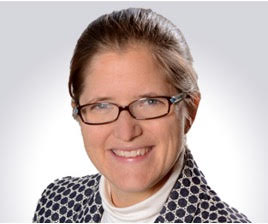Our nation is getting sicker. Research by the Employee Benefit Research Institute found that the number of people who spend $100,000 or more each year on healthcare increased by 50% between 2013 and 2021. The majority of conditions most represented in these costs included “nervous system disorders, heart disease, respiratory conditions, cancer, and musculoskeletal conditions.” Nearly half of all annual healthcare spending in the U.S. comes from just five percent of the population.
The Impact
Read More
Now Is The Time to Maximize the Efficiency of a Digital Front Door
Patients aren’t just patients anymore, they are consumers, meaning they won’t hesitate to change providers and health plans if their expectations aren’t met. At the same time, providers and payers are facing a shortage of skilled technical workers, making it more difficult to resolve lingering issues around data silos, patient engagement and more. Add in an uncertain global economy driving intensified competition and it’s clear that it’s time to make the digital front door as effective as it
Read More
How Health Systems Can Transform Fragmented Data Into a Unified Patient Experience
Imagine a giant clock where each single cog wheel contributes to displaying the time accurately. In this complex web of machinery, individual cogs can break, and the clock stops – rendering it useless. Healthcare organizations are at risk of facing a similar fate as they encounter fragmented IT infrastructures with disconnected data environments and silos. Failure to address this growing issue could have serious consequences, leading systems to falter sooner than anticipated.
In a recent
Read More
Cybersecurity in Healthcare: A Matter of Life and Death?
Perhaps more than any other sector, the healthcare industry faces great tension between security and easy access to data. Hospitals, doctors and other care providers need to have as much data and information readily available to use to treat patients and save lives; while at the same time keeping this sensitive information secure. This tension combined with the complexity of the healthcare sector, including its web of facilities, medical records, devices insurance companies, care providers,
Read More
How to Achieve Health Equity in Decentralized Clinical Trials
Trial sponsors have made efforts to address underrepresentation and promote Diversity, Equity and Inclusion (DEI) in clinical trials since the Federal and Drug Administration’s (FDA) 2016 guidance, but a new report released by the Government Accountability Office (GAO) still shows a continuous presence of major gaps in patient diversity. It begs the question: how do we ultimately achieve full representation and ensure accountability to uphold the promises we have made for
Read More
How Clinical Decision Support Can Help Alleviate Provider Burnout
As health systems look to heal from two years of pandemic-related struggles and skyrocketing costs, new data reveals an even more troubling issue – disturbing levels of burnout across the entire healthcare ecosystem.
New research from Mayo Clinic Proceedings found that 63% of physicians report at least one symptom of burnout, a drastic increase from 46% in 2011. For organizations already navigating supply chain issues, increased operating costs, and COVID-19 surges, health systems risk
Read More
How EHR Interoperability Will Impact Health Care IT in 2023 and Beyond
The U.S. healthcare system has been in desperate need of modernization for decades. Thankfully, essential change is finally happening.
IT workers at healthcare organizations are now creating more efficient and effective electronic health records (EHRs), a process that requires integrating EHRs with new patient-access technologies. It also means that other healthcare workers – medical assistants, teletriage nurses, call center agents, etc. – need to change the way they work in
Read More
Why Interoperability is Key to Successful Digital Pharma Solutions
We are at an interesting crossroads when it comes to pharma and digital health. Several years after the first iteration of digital patient solutions was initially launched, many pharma companies are taking a step back to strategically evaluate how they have performed in practice and the impact they have had on both patient and business outcomes.
Unfortunately, many platforms that pharma companies have either integrated within existing platforms or built have failed to meet those needs – for
Read More
RCM: Why Generative AI is Needed for Prior Authorization Reform
The headline-grabbing emergence of generative AI platforms, such as ChatGPT, BARD and BingGPT, has forced leaders across all verticals to ask, “What can we optimize with AI?” The AI chatbots remain in early stages of their development, but they have shown enough promise to suggest their full arrival is imminent. Every industry is currently weighing the best way to deploy AI, and that includes healthcare, where efficiency and improved workflows can make a tangible impact on the care that patients
Read More
Improving Medical Record Access Key to Unlocking Power of Data
Shannon West, Chief Product Officer for Datavant
The healthcare industry is facing immense pressure to provide patients with seamless and compliant access to their medical records. Despite recent regulations that discourage information blocking and promote interoperability for secure access, the medical records retrieval process remains confusing and difficult. This affects both patients and healthcare providers, who need a comprehensive understanding of the patient's record and context. Even
Read More











